Resonator 2019
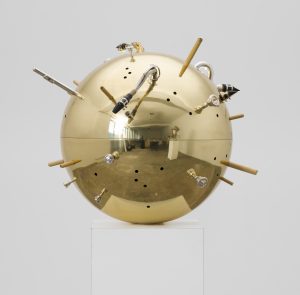
Resonator Wind, 2019
brass, bamboo cane, mouthspieces of different wind instruments, various metals
ht 80 cm, w 100 cm, d 100 cm
(photo credit: Trevor Good)
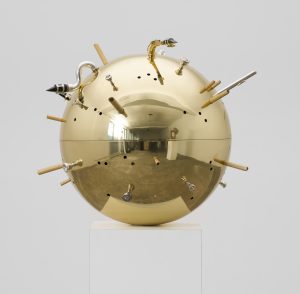
Resonator Wind, 2019
brass, bamboo cane, mouthspieces of different wind instruments, various metals
ht 80 cm, w 100 cm, d 100 cm
(photo credit: Trevor Good)
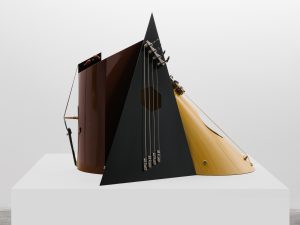
Resonator Strings, 2019
plywood, spruce, multiplex, paint, zither strings, bass guitar strings, guitar strings, cello strings, and mechanisms, amplification option
ht 82 cm, w 85 cm, d 100 cm
(photo credit: Trevor Good)
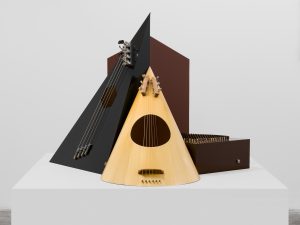
Resonator Strings, 2019
plywood, spruce, multiplex, paint, zither strings, bass guitar strings, guitar strings, cello strings, and mechanisms, amplification option
ht 82 cm, w 85 cm, d 100 cm
(photo credit: Trevor Good)
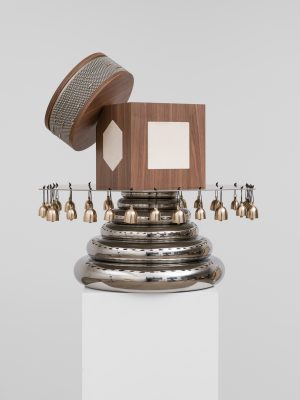
Resonator Percussion, 2019
stainless steel, plywood, leather, bronze
ht 95 cm, w 100 cm, d 100 cm
(photo credit: Trevor Good)
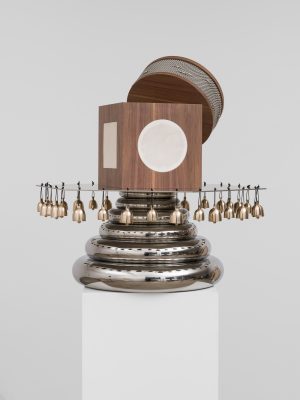
Resonator Percussion, 2019
stainless steel, plywood, leather, bronze
ht 95 cm, w 100 cm, d 100 cm
(photo credit: Trevor Good)
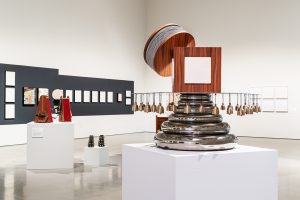
Installation view, The Moody Center for the Arts: Soundwaves: Experimental Strategies in Art + Music, Hosten, USA, 2022
(photo credits: Nash Baker)
commissioned by the Moody Center for the Arts
(photo credit: Nash Baker) commissioned by the Moody Center for the Arts
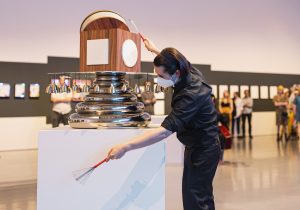
Performance, The Moody Center for the Arts: Soundwaves: Experimental Strategies in Art + Music, Hosten, USA, 2022
(performer: Nick Finley)
(photo credit: Nash Baker) commissioned by the Moody Center for the Arts
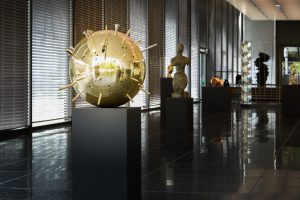
Installation view, Nevin Aladağ, Lehmbruck Museum, Sculpture 21st, 2021
(photo credit: Frank Vinken)
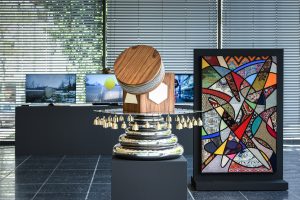
Installation view, Nevin Aladağ, Lehmbruck Museum, Sculpture 21st, 2021
(photo credit: Frank Vinken)
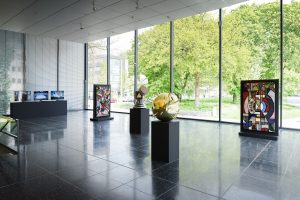
Installation view, Nevin Aladağ, Lehmbruck Museum, Sculpture 21st, 2021
(photo credit: Frank Vinken)
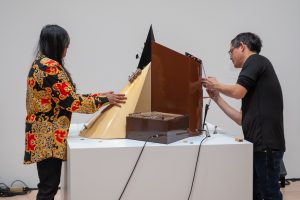
Performance, New Work, San Francisco Museum of Modern Art, 2019
(photo credit: Adam Jacobs)
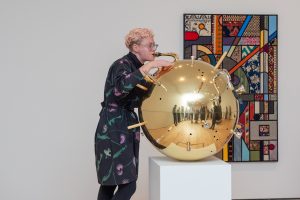
Performance, New Work, San Francisco Museum of Modern Art, 2019
(photo credit: Adam Jacobs)
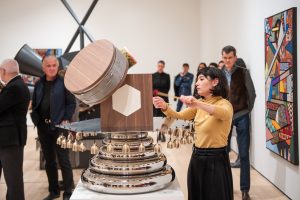
Performance, New Work, San Francisco Museum of Modern Art, 2019
(photo credit: Adam Jacobs)
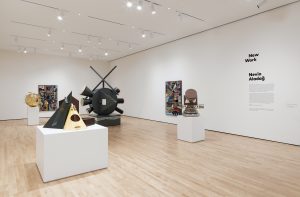
Installation View, New Work, San Francisco Museum of Modern Art, 2019
(photo credit: Katherine Du Tiel)
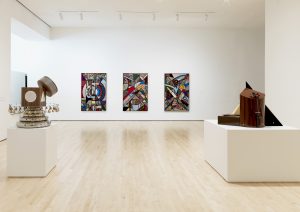
Installation View, New Work, San Francisco Museum of Modern Art, 2019
(photo credit: Katherine Du Tiel)
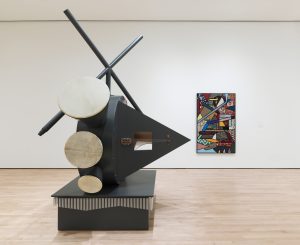
Installation View, San Francisco Museum of Modern Art, 2019
(photo credit: Katherine Du Tiel)
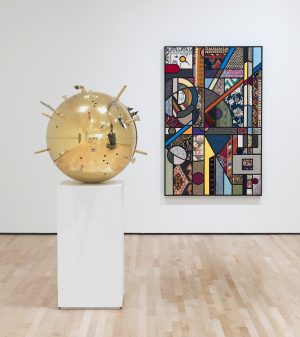
Installation View, San Francisco Museum of Modern Art, 2019
(photo credit: Katherine Du Tiel)
In the series Resonator musical sculptures, musical instruments from around the world — panpipes, a tuba, a agogo, a zither, a cello, a bass guitar, drums and a tuba— are joined as geometrically abstract forms that create new sounds.
Inspired by the first Resonator’s multipart structure, the three additional works from the series, combine found and fabricated instruments from different traditions but the same families—wind, string, and percussion, respectively. These pieces dismantle the sovereignty of a single resonating body and reimagine the possibilities of form through unexpected combinations. They accentuate shared traits through a simplified vocabulary of circles, squares, triangles, and other elemental shapes. Resonator Wind is a gleaming brass sphere with found mouthpieces from various wind instruments—panpipe, flute, tuba, and saxophone—emanating from its reflective surface. A triangular steel agogo serves as the base for Resonator Percussion; it is topped by a cube of geometric, leather-covered drums and a skirt of bells. A string quartet—bass guitar, acoustic guitar, cello, and zither—compose Resonator Strings. By gathering instruments from around the globe and assembling each type with other members of its dispersed musical family, these smaller Resonator works highlight a common history of sound-making objects across time and space.
The sculptures explore both the apparent contradictions and the fluidity between marking a place and being on the move. The physical phenomenon of sound does not adhere to borders; it travels, bounces, and echoes through space and material. Music is among the most mobile forms of culture, as melodies and songs are carried across borders with bodies and through broadcast or recordings. Aladağ thus literalizes the mingling of music practices and traditions through her creation of structures that bring together instruments from various backgrounds. The idea of belonging takes root not only through the recuperation of disparate parts into unified material objects but also through filling, even exceeding, a space with sound.
(Excerpt
from essay by Rachel Jans, assistant curator @ San Francisco Museum of Modern Art)

















